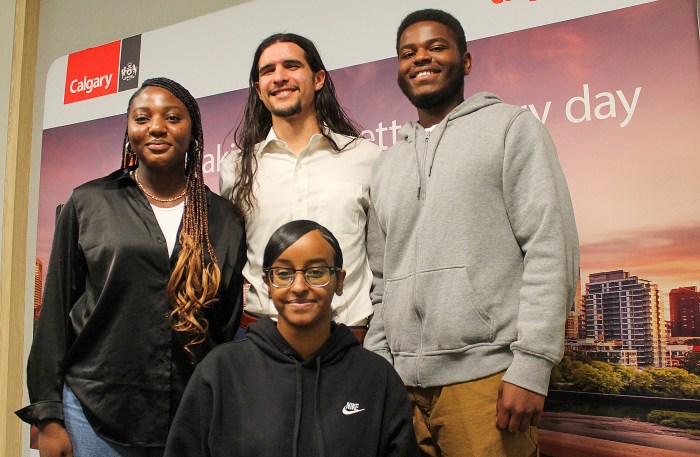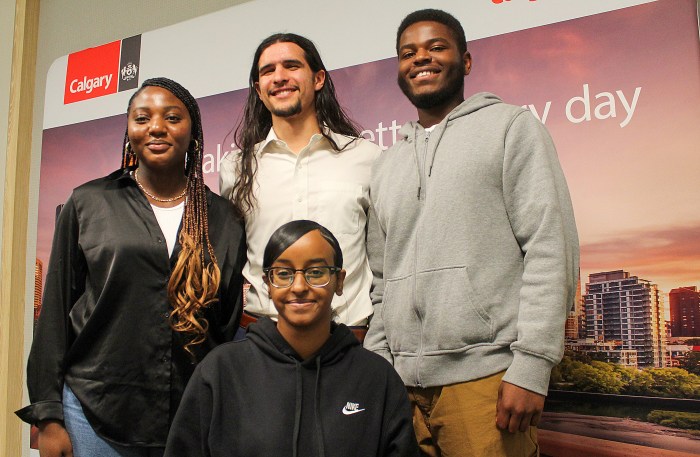
Breaking the Cycle: Demanding Action for Racialized Youth and Safer Communities in Toronto
Breaking the cycle demanding action for racialized youth and safer communities in Toronto is a call for systemic change, recognizing the deep-rooted historical and contemporary factors that perpetuate disadvantage for marginalized youth in the city. The cycle of disadvantage manifests in various ways, impacting access to education, employment, healthcare, and ultimately, shaping their experiences within communities.
This issue goes beyond mere statistics, it speaks to the lived realities of young people who face daily challenges due to systemic racism, poverty, and lack of opportunity. It’s a complex issue that requires a multifaceted approach, focusing on education, empowerment, and collaborative solutions to create a more equitable and just city for all.
The Cycle of Disadvantage: Breaking The Cycle Demanding Action For Racialized Youth And Safer Communities In Toronto

The cycle of disadvantage experienced by racialized youth in Toronto is a complex and deeply rooted issue that has been shaped by historical and systemic factors. This cycle perpetuates inequality, limiting opportunities and hindering the full potential of these young individuals.
It’s a multifaceted problem that requires a multi-pronged approach to address and break.
Historical and Systemic Factors
The historical and systemic factors contributing to the cycle of disadvantage faced by racialized youth in Toronto are deeply intertwined. They stem from a legacy of colonialism, racism, and discrimination that has shaped the city’s social and economic landscape. These factors continue to manifest in various aspects of life, including education, employment, and access to healthcare, perpetuating a cycle of disadvantage.
Education
- Limited access to quality education:Racialized youth are disproportionately represented in under-resourced schools, often facing larger class sizes, inadequate facilities, and limited access to specialized programs. This disparity in educational resources directly impacts their academic performance and future opportunities.
- Discrimination and bias:Racialized students may experience discrimination and bias from educators, peers, and the school system itself. This can lead to feelings of alienation, lower self-esteem, and a lack of belonging, negatively impacting their educational outcomes.
- Underrepresentation in higher education:Racialized youth are underrepresented in post-secondary institutions, particularly in fields like STEM and business. This is due to a combination of factors, including financial barriers, lack of access to mentorship, and systemic biases in the admissions process.
Employment
- Higher unemployment rates:Racialized youth face significantly higher unemployment rates compared to their white counterparts. This is attributed to factors such as discrimination in hiring practices, lack of access to networks, and limited opportunities for career advancement.
- Underemployment and wage gaps:Even when employed, racialized youth are often underemployed, working in jobs that do not match their skills and qualifications. They also experience wage gaps, earning less than their white counterparts for similar positions.
- Limited access to training and development:Racialized youth may have limited access to training and development opportunities, hindering their career progression and economic mobility. This can be due to financial barriers, lack of awareness about programs, and systemic biases in access to resources.
Healthcare
- Disparities in health outcomes:Racialized youth experience poorer health outcomes compared to their white counterparts, including higher rates of chronic diseases, mental health issues, and premature mortality. These disparities are linked to factors like poverty, environmental hazards, and limited access to quality healthcare.
- Discrimination and bias in healthcare:Racialized youth may face discrimination and bias from healthcare providers, leading to mistrust, delayed diagnoses, and inadequate treatment. This can result in poorer health outcomes and a lack of access to necessary care.
- Limited access to culturally sensitive services:Racialized youth may have limited access to culturally sensitive healthcare services that meet their unique needs and preferences. This can be due to a lack of culturally competent providers, language barriers, and a lack of understanding of their specific health concerns.
It’s time to break the cycle of systemic issues that plague racialized youth in Toronto. We need to create safer communities, not just for our kids, but for everyone. While working towards that goal, I’m finding some peace in the simple act of self-care, like learning to braid my own hair.
I recently watched a tutorial on tricks treats cascade braid with sarah lockhart , and it’s surprisingly therapeutic. Even small acts of self-care can help us stay grounded and motivated in the fight for a better future.
Breaking the Cycle
The cycle of disadvantage can be broken by empowering racialized youth in Toronto with education and opportunities. This section will explore initiatives that provide educational opportunities and empower racialized youth in Toronto.
Building safer communities for racialized youth in Toronto requires a multifaceted approach. We need to break the cycle of systemic inequities and create opportunities for everyone to thrive. It’s inspiring to see initiatives like the Feast Imagination Picaderos NCBI fundraiser in Maynooth County Kildare that are bringing people together to support causes that matter.
This kind of collaborative spirit is crucial for creating lasting change and fostering a more equitable future for all.
Successful Initiatives for Education and Empowerment
Numerous initiatives in Toronto are actively working to break the cycle of disadvantage by providing educational opportunities and empowering racialized youth. These programs address various challenges, from promoting leadership development to facilitating access to higher education.
- The Black Youth Action Plan (BYAP), developed by the City of Toronto, focuses on addressing the unique needs of Black youth. The BYAP aims to create a more equitable and inclusive city by providing opportunities for Black youth to thrive in education, employment, and community engagement.
The program offers various initiatives, including mentorship programs, career development workshops, and financial assistance for post-secondary education.
- The Jane & Finch Community & Family Centreoffers a range of programs designed to empower youth in the Jane & Finch community. These programs include academic support, career counselling, and youth leadership development. The center’s goal is to provide youth with the resources and support they need to succeed in their education and future careers.
- The United Way of Greater Torontofunds various programs that support racialized youth in Toronto. One such program is the “Pathways to Education”initiative, which provides wraparound support to students from low-income families, helping them navigate the challenges of accessing and succeeding in post-secondary education.
Impact of Programs on Racialized Youth
These initiatives have a profound impact on the lives of racialized youth in Toronto. They provide opportunities for personal and professional growth, enabling them to overcome systemic barriers and achieve their full potential.
- Increased access to higher education:Programs like Pathways to Education have significantly increased the number of racialized youth attending post-secondary institutions. This increased access opens doors to higher-paying jobs and economic stability.
- Enhanced leadership skills:Initiatives that promote leadership development, such as those offered by the Jane & Finch Community & Family Centre, equip youth with the skills they need to become active members of their communities and advocate for social change.
- Improved mental health and well-being:Programs that provide mentorship and support services contribute to the overall well-being of racialized youth. By addressing the unique challenges they face, these programs promote mental health and resilience.
Program Design for Racialized Youth in Toronto, Breaking the cycle demanding action for racialized youth and safer communities in toronto
A comprehensive program designed to address the specific needs of racialized youth in Toronto should incorporate the following key elements:
- Early intervention:The program should start early, ideally in elementary school, to provide foundational support and guidance. This could involve providing academic support, mentoring, and social-emotional learning programs.
- Career exploration and development:The program should offer career exploration opportunities, including internships, job shadowing, and career counselling. This will help youth identify their interests and develop skills that are in demand in the workforce.
- Financial literacy and entrepreneurship:The program should include financial literacy education and entrepreneurship training. This will empower youth to manage their finances effectively and pursue their own business ventures.
- Community engagement and advocacy:The program should encourage youth to become active members of their communities and advocate for social justice. This could involve organizing community events, participating in political campaigns, and working with local organizations.
- Mentorship and support services:The program should provide access to mentorship and support services, such as counselling, tutoring, and legal aid. This will help youth navigate the challenges they face and access the resources they need to succeed.
“Investing in the education and empowerment of racialized youth is an investment in the future of Toronto. By breaking the cycle of disadvantage, we can create a more equitable and inclusive city for all.”
It’s time we break the cycle of violence and demand action for racialized youth and safer communities in Toronto. We need to invest in programs that empower young people, like mentorship initiatives and after-school programs, and address the root causes of crime, such as poverty and lack of opportunity.
Maybe a fun family activity like dressing up in a dumb dumber mommy and me costume can bring some joy and lightheartedness to the conversation, reminding us that even in the face of serious challenges, we can find ways to connect and build a better future for everyone.
Building Safer Communities

Building safer communities for racialized youth in Toronto requires a multifaceted approach that addresses the root causes of crime and violence, fosters positive youth development, and promotes collaboration among diverse stakeholders. By working together, we can create a more just and equitable society where all young people have the opportunity to thrive.
Collaboration for Safer Communities
A collaborative approach involving community organizations, government agencies, and law enforcement is crucial to addressing the complex challenges facing racialized youth. By working together, these stakeholders can leverage their unique strengths and resources to develop comprehensive solutions that address the root causes of crime and violence.
Community Organizations
Community organizations play a vital role in building safer communities by providing essential services, supporting youth development, and advocating for policy changes. These organizations often have deep roots in the communities they serve and are well-positioned to understand the specific needs and challenges of racialized youth.
Government Agencies
Government agencies have a responsibility to ensure the safety and well-being of all citizens, including racialized youth. They can play a crucial role in funding community programs, implementing policies that address systemic inequalities, and providing resources to support law enforcement agencies.
Law Enforcement
Law enforcement agencies have a critical role to play in maintaining public safety. However, it is essential that they work in partnership with community organizations and government agencies to address the root causes of crime and violence. This includes building trust with racialized communities, engaging in community policing strategies, and focusing on restorative justice approaches.
Collaborative Solutions: Examples of Success
Numerous community-based initiatives have demonstrated the effectiveness of collaborative approaches in improving safety and well-being for racialized youth in Toronto. These initiatives often involve partnerships between community organizations, government agencies, and law enforcement.
Table of Community Organizations
| Organization Name | Focus Area | Target Audience | Key Initiatives |
|---|---|---|---|
| Black Creek Community Health Centre | Health and Wellness | Black youth in North York | Youth mentorship programs, health education workshops, community outreach |
| Jane Finch Community and Family Centre | Social Services and Youth Development | Youth in Jane and Finch | After-school programs, employment training, community events |
| The Neighbourhood Group | Community Development and Advocacy | Residents of Regent Park | Housing advocacy, youth employment programs, community organizing |
| The Stop Community Food Centre | Food Security and Community Building | Low-income families and individuals | Food programs, community gardens, nutrition education |
Policy Recommendations
Breaking the cycle of disadvantage and building safer communities for racialized youth in Toronto requires a multi-faceted approach that addresses systemic racism and its impact on access to opportunities. The following policy recommendations aim to create a more equitable and just city for all.
Investing in Early Childhood Education and Development
Investing in early childhood education and development is crucial for breaking the cycle of disadvantage. This includes ensuring access to high-quality, culturally responsive early learning programs for all children, regardless of their background. This can help to close the achievement gap and set children on a path to success.
- Increase funding for early childhood education programs, including universal access to full-day kindergarten.
- Develop culturally relevant curriculum and training for early childhood educators to better serve the needs of racialized children.
- Expand access to early intervention services for children with developmental delays.
Addressing Systemic Racism in Education
Systemic racism in education perpetuates inequality and limits opportunities for racialized youth. Addressing this requires a comprehensive approach that tackles discrimination and bias at all levels of the education system.
- Implement anti-racism training for educators and administrators.
- Develop culturally responsive curriculum that reflects the diverse experiences of students.
- Increase the representation of racialized teachers and administrators in schools.
- Address the disproportionate rates of suspension and expulsion of racialized students.
Promoting Economic Opportunities
Racialized youth face significant barriers to economic opportunities. This includes limited access to employment, education, and training.
- Create targeted employment programs and apprenticeships for racialized youth.
- Provide financial assistance and mentorship to support entrepreneurship among racialized youth.
- Increase access to affordable housing and transportation to improve economic mobility.
Enhancing Community Safety and Support
Racialized youth are disproportionately affected by violence and crime. Building safer communities requires a focus on prevention, intervention, and support.
- Invest in community-based programs that address the root causes of violence and crime, such as poverty, lack of opportunity, and systemic racism.
- Expand access to mental health and addiction services for youth.
- Promote positive youth development programs that foster leadership, resilience, and civic engagement.
Strengthening Community Engagement and Partnerships
Community engagement is essential for developing effective solutions to the challenges facing racialized youth.
- Support community organizations that are working to address the needs of racialized youth.
- Establish partnerships between government, community organizations, and youth.
- Create platforms for youth to participate in decision-making processes that affect their lives.

